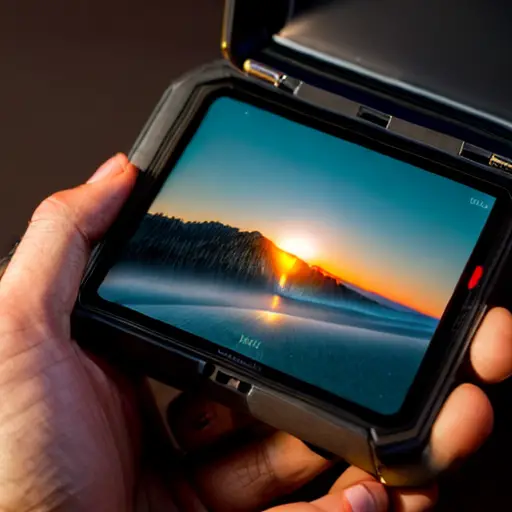Softboxes, those mystical contraptions that resemble oversized marshmallows, are the unsung heroes of photography lighting. Picture this: you're in a dimly lit room, trying to capture the perfect shot, but the harsh shadows are conspiring against you. Enter the softbox, your trusty sidekick in the battle against unflattering lighting. With its magical ability to diffuse light like a ninja, the softbox transforms even the harshest beams into a gentle, flattering glow. It's like having your own personal lighting fairy, sprinkling softness and radiance onto your subjects. So, next time you're faced with a lighting dilemma, don't underestimate the power of the softbox – it's the secret weapon that will make your photos shine brighter than a disco ball at Studio 54.
An interesting fact about softboxes in photography is that they were originally inspired by the soft, diffused lighting created by windows. Photographers sought to replicate this natural lighting indoors, leading to the invention of softboxes.
Softboxes, those versatile chameleons of the photography world, come in all shapes and sizes, each with its own unique set of skills. From the classic rectangular softbox, perfect for illuminating full-body shots with its wide spread of light, to the compact octagonal softbox, ideal for creating soft, circular catchlights in your subject's eyes, there's a softbox for every occasion. And let's not forget about the strip softbox, the long and narrow wonder that effortlessly adds a touch of drama to your images. With their ability to shape and control light, these softbox superheroes are the Swiss Army knives of the photography world, ready to tackle any lighting challenge that comes their way. So, whether you're shooting portraits, products, or even food, don't be afraid to explore the vast world of softboxes and unleash their versatility and functionality to elevate your photography game.

Setting up a softbox is like embarking on a quest to achieve the perfect diffused lighting. It may seem daunting at first, but fear not, for with a little practice and patience, you'll soon become a master of this art. First, assemble your softbox, which is essentially a fabric-covered frame that houses a light source. Attach it securely to your light stand, making sure it's stable and won't topple over like a Jenga tower. Now comes the crucial step: positioning. Place your softbox at a 45-degree angle to your subject, slightly above eye level. This will create a beautiful, flattering light that gently wraps around your subject's features, minimizing harsh shadows and accentuating their best side. Remember, the key is to achieve a soft, even spread of light that enhances your subject's natural beauty, not to blind them with a spotlight worthy of a Broadway show.
Next, it's time to adjust the power of your light source. Start with a lower setting and gradually increase it until you achieve the desired level of brightness. Keep in mind that the distance between your softbox and subject will also affect the intensity of the light. The closer the softbox, the softer and more diffused the light will be. Experiment with different distances and power settings to find the perfect balance that suits your creative vision.
Don't forget about the importance of modifiers. Softboxes often come with additional accessories, such as grids or diffusers, that allow you to further control and shape the light. A grid, for example, narrows the spread of light, creating more defined shadows and adding a touch of drama to your images. On the other hand, a diffuser spreads the light even more, resulting in an ultra-soft and dreamy effect. Play around with these modifiers to add your own artistic flair to your photographs.
Lastly, don't be afraid to experiment and have fun with your softbox setup. Move it around, try different angles, and see how the light transforms your subject. Remember, photography is an art form, and softboxes are your paintbrushes. So, embrace the challenge, embrace the softbox, and let your creativity shine through the beautifully diffused light.
A fun fact about softboxes in photography is that they were originally inspired by the soft, diffused lighting created by clouds on an overcast day. Photographers wanted to replicate this natural lighting effect in their studios, leading to the invention of softboxes.
Softboxes are not just tools for achieving well-lit portraits; they are also powerful instruments for unleashing your creativity and capturing stunning images. With their ability to shape and control light, softboxes open up a world of possibilities for photographers. Want to create dramatic, high-contrast images? Position your softbox at a steep angle and let the shadows dance across your subject's face. Looking to capture ethereal, dream-like shots? Add a diffuser to your softbox and let the light gently wrap around your subject, creating a soft and enchanting glow. Whether you're shooting still life, fashion, or even landscapes, softboxes can be your secret weapon for adding depth, dimension, and a touch of magic to your photographs. So, don't be afraid to think outside the box and explore the endless creative applications of these versatile lighting tools.